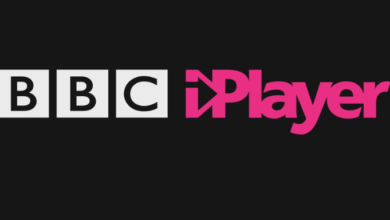The Block Nft 1m Maywilhelmtechcrunch

The recent sale of a million-dollar NFT on The Block has sent shockwaves through the crypto community, casting a spotlight on the rising popularity and impact of non-fungible tokens in the art world.
NFTs, or non-fungible tokens, have emerged as a revolutionary technology that allows for the ownership and trading of unique digital assets on blockchain networks. This groundbreaking development has opened up new possibilities for artists and collectors alike, challenging traditional notions of value and authenticity in the age of digital art.
The Block’s million-dollar NFT sale signifies a significant milestone for the crypto community, showcasing both the potential and power of this emerging market. With NFTs gaining traction in various industries, including music, gaming, and sports memorabilia, their impact on the art world cannot be underestimated.
These digital tokens provide artists with newfound opportunities to monetize their creations directly without relying solely on galleries or intermediaries. Furthermore, they offer collectors a chance to own one-of-a-kind pieces that can be easily verified and traded securely through blockchain technology.
As more high-profile sales like this occur, it is evident that NFTs are redefining how we perceive ownership and value in the realm of digital art.
In this article, we will delve into the rise of NFTs and explore their profound implications for the art world. We will examine The Block’s million-dollar sale from an analytical perspective, analyzing its significance within broader contexts such as decentralization, democratization of art ownership, and potential challenges faced by this nascent industry.
By understanding these developments in detail, readers will gain insight into how NFTs are reshaping not only the art market but also our perception of creativity in an increasingly digitized society.
The Rise of NFTs and Their Impact on the Art World
The emergence of NFTs has had a profound impact on the art world, revolutionizing the way artists create, sell, and value their work.
NFTs, or non-fungible tokens, are unique digital assets that can represent ownership rights over a specific piece of art or collectible. Through tokenization, artists are able to authenticate and verify the originality of their work in the digital realm, providing a sense of exclusivity and scarcity that was previously difficult to achieve in an online environment.
This has allowed artists to monetize their creations more easily and directly, bypassing traditional intermediaries such as galleries or auction houses. Additionally, NFTs have provided a new way for collectors to engage with art by allowing them to acquire verifiable ownership rights over pieces they admire.
The transparent nature of blockchain technology ensures that these ownership rights are securely recorded and cannot be tampered with, thus establishing trust between artists and collectors.
Overall, the rise of NFTs has not only challenged traditional notions of physical art but also democratized access to the art market while preserving its value through tokenization and ownership rights.
The Block’s Million-Dollar NFT Sale: A Game-Changer for the Crypto Community
This groundbreaking transaction has the potential to revolutionize the crypto community, acting as a catalyst for widespread adoption and sparking a new era of digital asset valuation.
The rise of NFTs in the music industry is revolutionizing the way artists monetize their work. By tokenizing their music and selling it as NFTs, artists can directly connect with their fans and receive a fair share of the profits without relying on intermediaries. This not only empowers artists but also opens up new avenues for creativity and artistic expression.
However, alongside this transformative potential, there are concerns regarding the environmental impact of NFT transactions. The carbon footprint associated with blockchain technology and digital art transactions has raised questions about sustainability. As more attention is drawn to these issues, it becomes crucial for the crypto community to find sustainable solutions that minimize energy consumption and promote eco-friendly practices in order to ensure a responsible future for NFTs in the art world.
See also Facebook Reuters Spanish Arabicfischeraxios
The Value and Authenticity of Digital Art in the Age of NFTs
One aspect to consider in the age of NFTs is the evaluation and authenticity of digital art. As digital collectibles gain popularity, there arises a need for mechanisms to verify the originality and value of these artworks.
Blockchain technology plays a significant role in addressing this challenge by providing a decentralized and transparent platform for art authentication. Through blockchain, each NFT can be uniquely identified, allowing artists to prove ownership and authenticate their creations.
Additionally, smart contracts embedded within NFTs enable creators to set royalties for future sales, ensuring ongoing compensation for their work.
The future of digital collectibles hinges on establishing trust and credibility within the crypto community, and blockchain offers a promising solution in this regard. By leveraging blockchain’s immutable nature and cryptographic security, digital art can be bought, sold, and displayed with confidence.
As more artists embrace NFTs as a means of showcasing their work, it is likely that we will witness further innovations in the evaluation and authentication processes, ultimately shaping the future landscape of digital art.
Frequently Asked Questions
How does the process of creating and selling NFTs work?
The NFT creation process involves encoding unique digital assets onto a blockchain, ensuring authenticity and scarcity. The NFT selling process includes listing the token on an online marketplace, where buyers can bid or purchase using cryptocurrency.
What are the main advantages and disadvantages of NFTs for artists?
The advantages of NFTs for artists include increased control over their work, potential for higher profits through direct sales, and the ability to reach a global audience. However, disadvantages include environmental concerns and the risk of copyright infringement.
Are there any legal considerations or copyright issues involved in buying or selling NFTs?
Legal implications and potential copyright infringement are major concerns in the buying and selling of NFTs. The unique nature of NFTs raises questions about ownership, licensing, and intellectual property rights, requiring careful consideration to avoid legal disputes.
Can NFTs be reproduced or copied, and if so, how does this affect their value?
The reproducibility of NFTs can lead to a depreciation in their value. Copies or reproductions of NFTs diminish the scarcity and exclusivity associated with them, reducing their appeal and potentially lowering their market price.
Are there any environmental concerns associated with the creation and trading of NFTs?
The creation and trading of NFTs raise concerns about their environmental impact and sustainability. The excessive energy consumption associated with blockchain technology contributes to carbon emissions, highlighting the need for more eco-friendly alternatives in the digital art market.
Conclusion
The rise of non-fungible tokens (NFTs) has had a profound impact on the art world, revolutionizing how we perceive and trade digital artwork.
The recent million-dollar sale of an NFT by The Block marks a significant milestone for the crypto community, showcasing the immense value and potential of this emerging technology. This groundbreaking event has the power to reshape traditional notions of art ownership and authenticity.
NFTs have opened up new avenues for artists to showcase their work in the digital realm, providing a unique way to monetize their creations. By leveraging blockchain technology, these tokens offer unprecedented transparency and security, ensuring that each artwork is verifiably authentic.
The Block’s million-dollar NFT sale not only demonstrates the growing demand for digital art but also highlights the transformative nature of NFTs within the crypto ecosystem.
In this age of NFTs, the concept of owning purely digital assets takes on a symbolic meaning beyond its tangible counterpart. These virtual artworks represent more than just pixels on a screen; they embody creativity, innovation, and individual expression.
The Block’s million-dollar NFT sale serves as a testament to this symbolism, as it signifies that society is embracing and recognizing the value of intangible artistic endeavors.
Moreover, this historic transaction signifies a shift in how we perceive ownership in our increasingly digitized world. With blockchain technology acting as an immutable ledger for these digital assets, individuals can now own and trade unique pieces without physical constraints or intermediaries.
This decentralization empowers both creators and collectors alike, fostering a vibrant ecosystem where artistic vision can thrive.
As we venture further into this technological frontier, it is crucial to acknowledge that NFTs are not merely fleeting trends but rather catalysts for long-lasting change within the art industry. They challenge established norms while opening up new possibilities for artists to explore their craft in innovative ways.
The Block’s million-dollar NFT sale represents just one milestone on this transformative journey, leaving us eager to witness the future developments and artistic revolutions that lie ahead.




